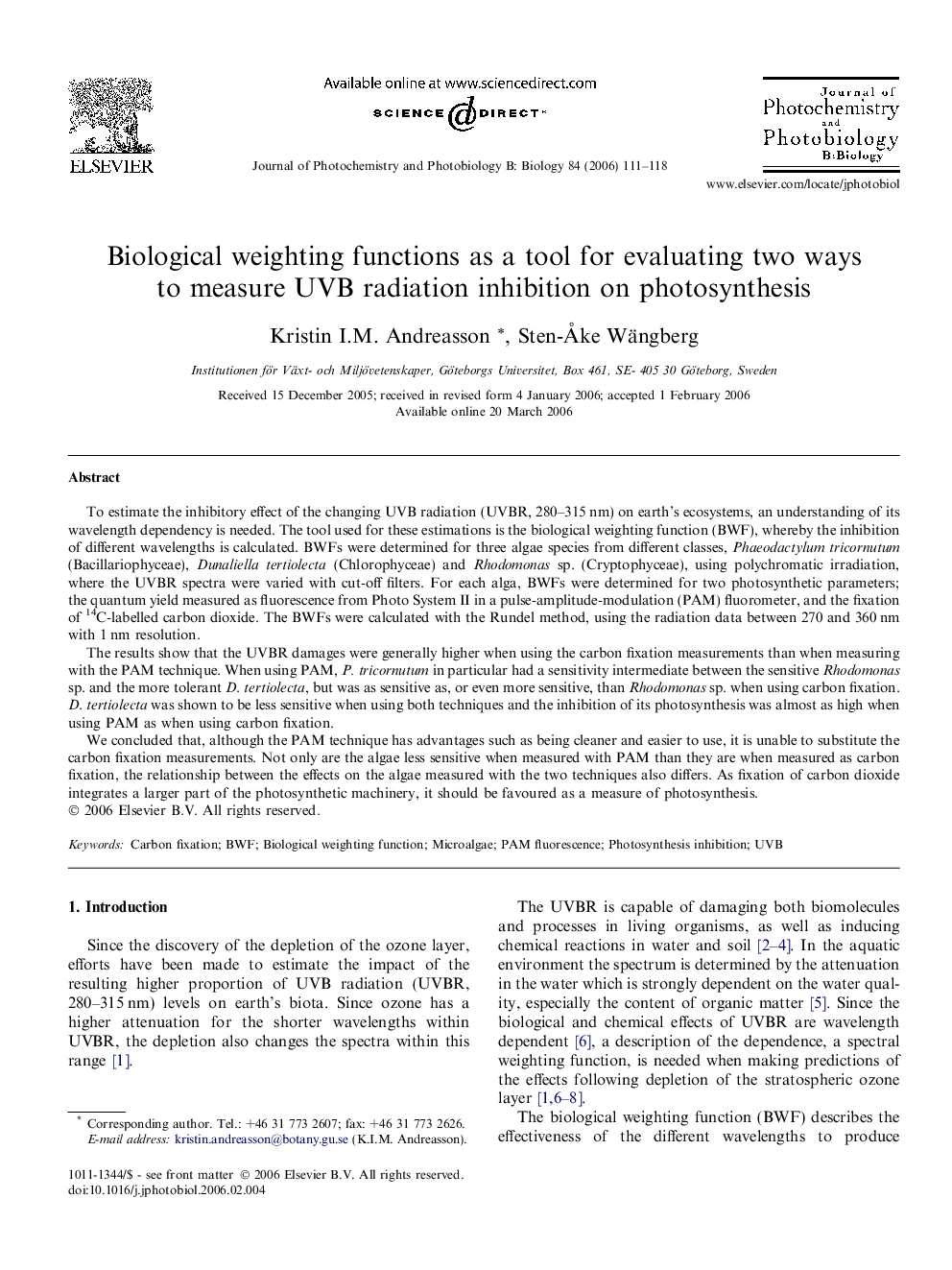| Article ID | Journal | Published Year | Pages | File Type |
|---|---|---|---|---|
| 31232 | Journal of Photochemistry and Photobiology B: Biology | 2006 | 8 Pages |
To estimate the inhibitory effect of the changing UVB radiation (UVBR, 280–315 nm) on earth’s ecosystems, an understanding of its wavelength dependency is needed. The tool used for these estimations is the biological weighting function (BWF), whereby the inhibition of different wavelengths is calculated. BWFs were determined for three algae species from different classes, Phaeodactylum tricornutum (Bacillariophyceae), Dunaliella tertiolecta (Chlorophyceae) and Rhodomonas sp. (Cryptophyceae), using polychromatic irradiation, where the UVBR spectra were varied with cut-off filters. For each alga, BWFs were determined for two photosynthetic parameters; the quantum yield measured as fluorescence from Photo System II in a pulse-amplitude-modulation (PAM) fluorometer, and the fixation of 14C-labelled carbon dioxide. The BWFs were calculated with the Rundel method, using the radiation data between 270 and 360 nm with 1 nm resolution.The results show that the UVBR damages were generally higher when using the carbon fixation measurements than when measuring with the PAM technique. When using PAM, P. tricornutum in particular had a sensitivity intermediate between the sensitive Rhodomonas sp. and the more tolerant D. tertiolecta, but was as sensitive as, or even more sensitive, than Rhodomonas sp. when using carbon fixation. D. tertiolecta was shown to be less sensitive when using both techniques and the inhibition of its photosynthesis was almost as high when using PAM as when using carbon fixation.We concluded that, although the PAM technique has advantages such as being cleaner and easier to use, it is unable to substitute the carbon fixation measurements. Not only are the algae less sensitive when measured with PAM than they are when measured as carbon fixation, the relationship between the effects on the algae measured with the two techniques also differs. As fixation of carbon dioxide integrates a larger part of the photosynthetic machinery, it should be favoured as a measure of photosynthesis.
